SilverStone ML04 & ML05 Slim HTPC Cases Review
by E. Fylladitakis on April 18, 2014 2:30 PM EST- Posted in
- Cases/Cooling/PSUs
- HTPC
- SilverStone
- desktops
Silverstone Milo ML04 Interior
As we mentioned on the previous page, the chassis of the Milo ML04 is made out of 0.8mm SECC steel. As a material, it withstands aging well but the thickness makes it flimsy, even for the narrow surfaces of the slim desktop case. Silverstone however thought ahead and installed two support braces, one at the top left corner and one diagonally across the center of the case. They do a remarkable job of maintaining the mechanical cohesion of the chassis and that becomes apparent once they are removed; when the supports are removed for the installation of components, bending certain parts of the case requires no more strength than that of a small child.
There are several points for cable straps, which ought to help with cable management a little. Silverstone ensures that you will have at least some cable management to do, as the cables of the case itself are peculiarly long, enough for them to easily reach a motherboard sitting on the table behind the case. All of the cables, especially the thicker USB 3.0/audio headers, could and ought to be significantly shorter.
Two cages come pre-installed for holding drives, both of which are removable. The metallic cage to the left side of the case can hold a 5.25" optical drive, or a single 3.5" drive, or two 2.5" drives. In any case, it will have to be removed from the case to install these drives. Beneath the metallic cage, a second 3.5" drive may be installed, mounted on the floor of the case with long screws (provided) inserted from the bottom of the case.
The plastic cage on the right side of the case is an odd design that can hold either a 2.5" or a 3.5" drive. Again, it will have to be removed before you can install the drives, as the mounting screws are inserted from the bottom. It is obvious that Silverstone tried to maintain a level of versatility here by allowing a 3.5" drive to be installed, as the drive will not fit sideways and it has to steer clear of the motherboard. On the other hand, there is already a mounting spot for a 3.5" drive beneath the optical drive bay and thus this plastic bracket appears slightly redundant, as it could have been replaced by a cage capable of holding more than two 2.5" drives.
The interior of the Milo ML04 is not exactly spacious, as Silverstone tries to minimize the depth and height of the case in order for it to fit in with other A/V equipment, but the layout of the case provides very good access when building a system. Due to the layout of the case however, there are several limitations. For instance, you cannot use a PSU longer than 140mm and an optical drive longer than 170mm. Still, even if you adhere to these specifications, the components are so tightly packed that you cannot perform any sensible cable management. As a matter of fact, it is not even possible to attach the cables to an optical drive while it is installed.
Finding a proper PSU for the Milo ML04 is not as easy as it sounds. The chassis needs to be 140mm long (or less) and PSUs with long cables are a curse inside such a case, which rules most high-performance units out of the equation. Using a modular PSU is not a great solution either, not because you will not be able to access the connectors but because the depth they add to the PSU can cause problems, as there is almost no clearance between the PSU and the optical drive. As for the PSU intake, it has a filter installed, accessible from the bottom of the case. The only downside is that the filter is secured with screws, so there is no fast and easy way of cleaning it. Silverstone supplied us with one of their Strider Essential series PSUs for testing, a simple and cost-effective power supply, which appears ideal for such a system.
We can recommend a little trick here; as the power requirements of a typical HTPC system are very low, it might be a good idea to get a low capacity SFX PSU instead. Most SFX PSUs come with ATX adapters, and their chassis is much shorter and thus will allow for much better cable management. Furthermore, a 250-300W SFX PSU will actually be far more efficient, as the power requirements of the system will be within the unit's operational range (all switching PSUs are extremely inefficient if the magnitude of the load is below 20% of their rated capacity).
The installation of a full-size Micro-ATX board inside the Milo ML04 is possible but routing the cables will require nerves of steel. The plastic drive cage will have to be removed in order to access the connectors beneath it. Due to the lack of space, most cables will amass above the bottom right corner of the motherboard, unavoidably creating a mess. There is no clearance between the motherboard and the PSU or the plastic drive cage; it appears that the case was designed to bring everything together as tightly as possible. As for the expansion cards, four low profile cards may be used. It is also possible to use a riser and install a full size single-slot card above the motherboard, but that would also limit the height of the CPU cooler from the already constrictive 70mm down to an absurd 36mm. The installation of any full size mainstream or above gaming graphics card is entirely out of the question.


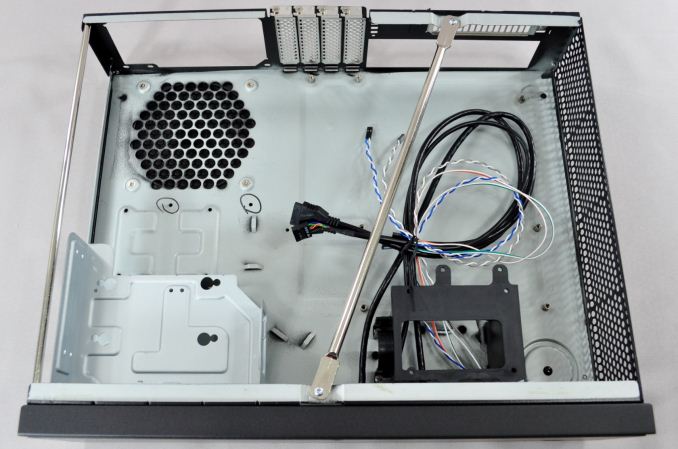






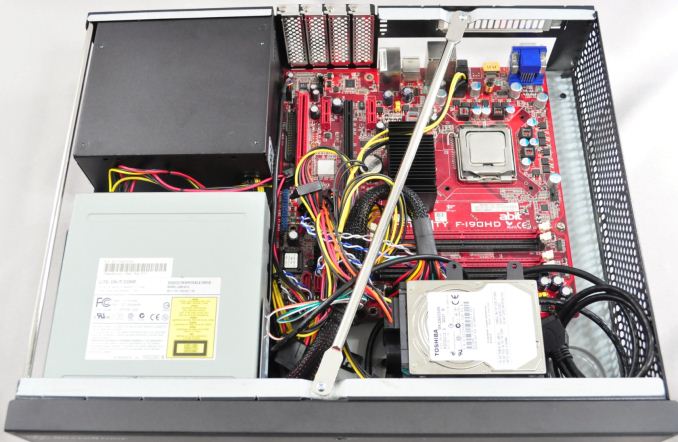
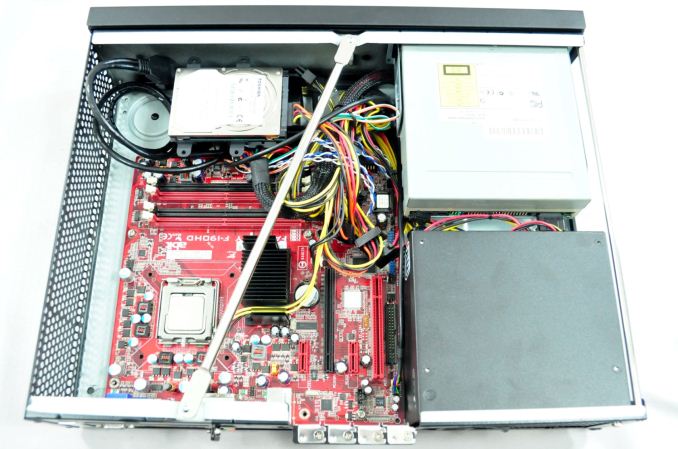
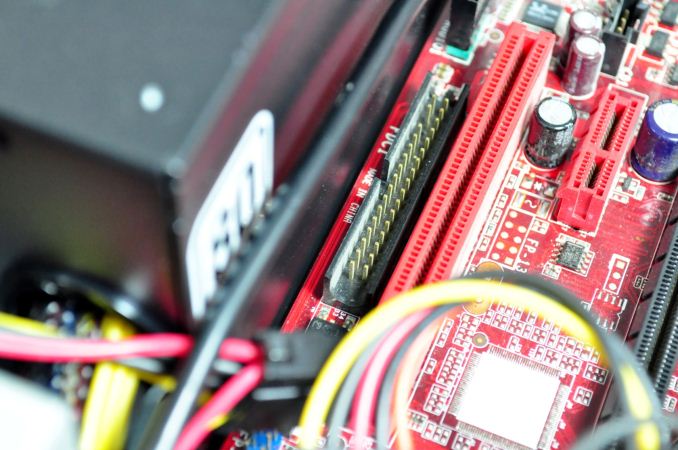
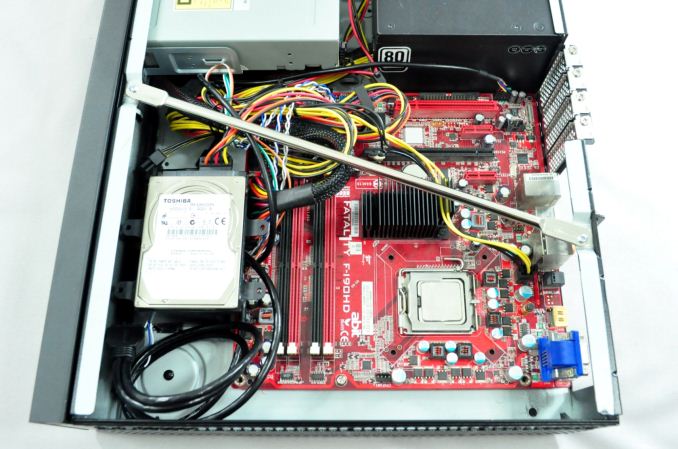








39 Comments
View All Comments
johnny_boy - Saturday, April 19, 2014 - link
The ML04 looks alright (not great, not terrible) but the ITX ML05 is terribly ugly. Diamond buttons? Big plastic strip across the front? There's a serious lack of nice, affordable, ITX cases especially in this HTPC form factor.Dave12311231 - Saturday, April 19, 2014 - link
I would like to use the Milo ML05 with a 19V DC connector equipped motherboard and a Broadwell or future AMD system. This would negate the cables from an internal PSU whilst still having a very small case, hopefully cheaper than a NUC system overall.jabber - Saturday, April 19, 2014 - link
These are NOT great looking cases.C'mon people try harder!
Alan G - Saturday, April 19, 2014 - link
Well they do look better than the traditional cable box that comes courtesy of your provider!I've built several HTPCs for family and friends over the past six months and these cases should be OK. You don't need any graphics cards with new CPUs (I use Intel but I'm sure the same is true with AMD on board graphics). In addition HTPC systems are not energy demanding and I've got one in a Lian Li PCQ-27 case which is passively cooled. Temperatures under operating conditions with only the Intel stock cooler run just over 30C which is fine. The review is correct about the lack of choices in PSUs for these applications. I've been using Seasonic G-360s which work just fine and are silent.
Thanks for this posting and continue to find some small HTPC case to review.
irusun - Saturday, April 19, 2014 - link
Agree.And especially the "mirror" front on the ML05 sounds awful... why would I want that sitting under/next to my TV bouncing all sorts of reflections?
jtd871 - Monday, April 21, 2014 - link
Silverstone now offers the recent ML06, which is the same chasis as the 05, but dumps the acrylic front panel for anodized aluminum like the 04.irusun - Saturday, April 19, 2014 - link
I'm aware others have had similar comments, and I'm sincerely not trying to hurt E. Fylladitakis feelings or question his technical competence, and I'm rooting for him to succeed, but he really needs help with the writing. It's pretty obvious that english is not his first language, and it results in wordy paragraphs, weird phrasings (at times it sounds like it was written by a bot), and it's just plain difficult to follow at times. I expect better writing at Anandtech.irusun - Saturday, April 19, 2014 - link
I'm surprised there's so little mention of "noise" in HTPC case reviews where noise is one of the primary issues of concern. I understand what was stated in the article about not being able to quantify results above background room noise, but how about some subjective comments just based on experience. Were the supplied PSUs "quiet"? Do the cases offer any advantages or disadvantages for building a quiet system? It's understood that there are an infinite combination of coolers and fans and PSUs, but I would expect some further thoughts on the noise front, even if they're just informed opinions.Daniel Egger - Monday, April 21, 2014 - link
When building an HTPC noise is completely in your hand. Even if the case contains fans you almost certainly don't want to use them without any sort of fan controller if at all. Getting a mainboard with enough 3 or even 4 pin connectors for controlling the fans is highly recommended. In my setup I connected the 2 case fans only to provide some general airflow through the case so the rest of the components will also receive some cooling (and the CPU fan blowing out at the top can run at the slowest level for a longer time) but they're setup to run at the lowest possible speed so they're inaudible unless you hold your ear right next to them. Before changing the fan controller setup they were blowing at full pace making some unacceptable amount of noise.Voldenuit - Sunday, April 20, 2014 - link
OK, I can understand why the ML04 doesn't have one, but wth didn't Silverstone design the ML05 with a GPU riser card to accommodate at least a medium to high end GPU? Even if a user opted not to turn their HTPC into a gaming device, this would open up the possibilities for more expansion cards that are not half height.